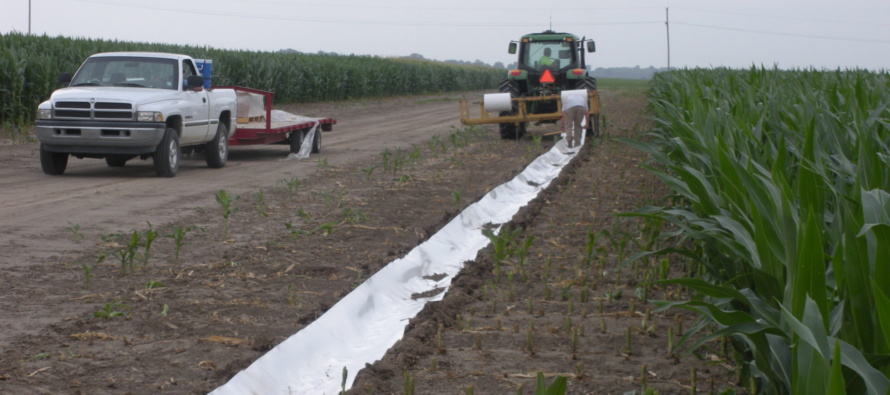Cotton Irrigation Considerations

Related Articles
- Fertilizing Cotton with Poultry Litter 5
- Mississippi Cotton Insect Situation of 2010: A Look Back 3
- Bayer CropScience-O.A. Cleveland Weekly Cotton Commentary 0
Latest Tweets
A few short weeks ago, excessive water was an issue for many; however, today many folks (particularly in the Delta) are in need or rainfall/irrigation. Given the challenging weather so far this year a couple of points should be considered when scheduling cotton irrigation. First and foremost, it seems that the vast majority of this crop has a shallow root system due to the excessive moisture throughout the spring. To that end, a shallower root will not be able to utilize moisture from deeper depths in the soil profile as we have seen in years where the root system is substantially deeper. Therefore, becoming more aggressive on irrigation should be considered.
If you are not using soil moisture sensors to schedule irrigation, utilize a shovel, sharpshooter, soil probe, etc. to determine moisture in the upper portion of the soil profile. If your roots are shallow as described above and observe a deficit in soil moisture in the upper 12″ of the soil profile, I would consider applying irrigation. The definition of a soil moisture deficit in the absence of some device to give you an accurate reading is somewhat in the eye of the beholder. In short, you will likely not be able to stretch irrigation intervals like you do in years where the plants have a strong, deep root system.
If you are using soil moisture sensors at multiple depths, I would consider putting more credence on readings from upper depths. For example, it is not uncommon to place soil matric sensors (Watermarks, etc.) at 6″, 12″, 24″ and 36″ In our work, we use an weighted average of these four depths where readings at 6″, 12″, 24″, and 36″ are multiplied by 17%, 17%, 33%, and 33% (these numbers must add up to 100 – you cannot have more or less of total area), respectively. Using these percentages, you are essentially trying to mimic how much moisture is being utilized at any given depth. If you are watching your sensor readings and notice changes in soil moisture readings at 6″ and 12″ but little to no movement at 24″ and 36″ and your crop has a poor root system – adjust the values by which you are multiplying which will result in more frequent and/or earlier irrgation. In effect, this will place more value on soil moisture deficit at the upper depths and trigger irrigation sooner. An example is given below:
Moisture sensor depth – 6″; Soil moisture sensor reading: 125 kPa; Percent multiplier: 33% (as opposed to 17% in a “normal year”): 125 * 0.33 = 41.25
Moisture sensor depth – 12″; Soil moisture sensor reading: 90 kPa; Percent multiplier: 33% (as opposed to 17% in a “normal year”): 90* 0.33 = 29.7
Moisture sensor depth – 24″; Soil moisture sensor reading: 60 kPa; Percent multiplier: 17% (as opposed to 33% in a “normal year”): 60 * 0.17 = 10.2
Moisture sensor depth – 36″; Soil moisture sensor reading: 20kPa; Percent multiplier: 17% (as opposed to 33% in a “normal year”): 20 * 0.17 = 3.4
Total: 84.55 kPa – if calculations were made as they are during a “normal year” using numbers outline above the total reading would be 63 kPa and irrigation would likely be delayed. However, at 85 kPa you are likely very close to applying irrigation depending on thresholds that you are using. As previously stated, this is applying irrigation water in a more aggressive manner given the shallow root system under much of this crop. There is no such thing a normal year and we must work with what we have in order to maximize productivity.




Let me tell You a sad story ! There are no comments yet, but You can be first one to comment this article.
Write a comment